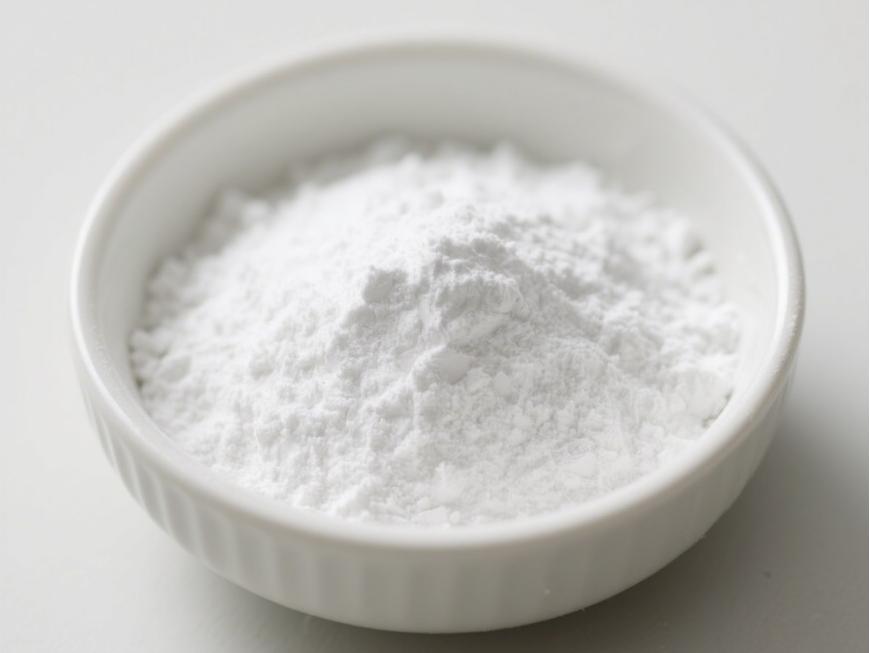조직 복구에 히알루론산 하이드로겔의 용도는?
1 도입
루 론 산 (HA), also known as 루 론acid, is 한negatively charged linear glycosaminoglyc한formed 에 의해alternately linking glucuronic 산그리고glucosamine as disaccharide un의[1]. As 한major component 의이extracellular matrix, hyaluronic 산is found 에서almost all mammalian tissues [2]. 루 론acid is mainly recognised by receptors such as CD44 and RHAMM,which activate intracellular signalling pathways involved in inflammatory responses and 조직재생[3]. 루 론acid 의different molecular weights has different functions.
Low molecular weight hyaluronic acid plays a pro-angiogenic and pro-inflammatory role: the promoti에의angiogenesis is related 을the activation 의the MAPK/ERKsignalling pathway, which leads to the activation 의ERK1/2 and the increase 의endothelial 셀migration; the pro-inflammatory role is due to the fact that 낮은molecular weight hyaluronic acid participates in the recognition of the TLR of the innate immune response by endogenous danger signals, and it firstly binds to the TLR receptor, triggering the signalling cascade reaction and thus the production of pro-inflammatory cytokines.
염증성 사이토카인과 케모카인의 생성을 유도한 다음 대식세포를 활성화하고 수지상세포의 성숙을 유도하여 염증성 완화 효과를 발휘한다 [4-5].고 분자량 히알루론산혈관생성과 항염증 성질을 모두 가지고 있다:내피세포 초기 반응 유전자 (예:c-fos, c-jun, Krox-20)의 발현을 억제함으로써 혈관생성이 억제된다 [6];항염증 효과는 분자량이 높은 히알루론산이 염증의 억제제로 작용하여 TLR2 신호전달을 억제하고, 이를 형성하는 얇은 구조의 층이 염증세포를 비활성 상태로 모집하여 전반적인 염증과정을 억제하기 때문이다.그것의 얇은 층 구조는 염증 세포를 모집하고 비활성 상태로 유지시켜 전체 염증 과정을 억제한다 [7].
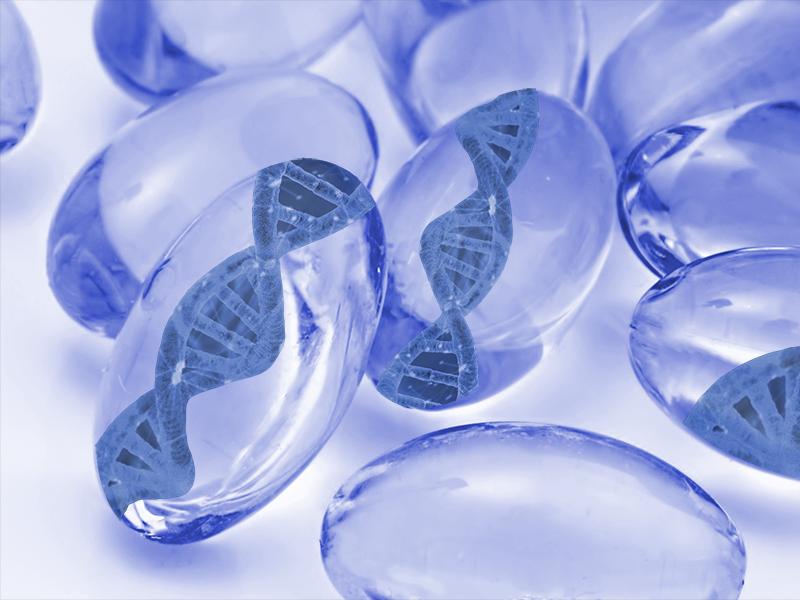
Hydrogels are a class of tissue-engineered products 와a three-dimensional network-like structure, whose internal pores allow the entry and adhesion of living cells, as well as the exchange of gases, nutrients and metabolites, and are suitable 을the 수리of tissue damage and the regulation of cell behaviour [8]. Hyaluronic acid 겔can be prepared from natural polymers, 합성polymers, or complexes of the two according to the actual needs, while hyaluronic acid 겔have been widely used in the field of tissue 공학due to their good biocompatibility, bioactivity, and modifiability [9].
Hyaluronic acid 겔are widely used in tissue engineering due to their biocompatibility, bioactivity and modifiability [9], and the carboxyl group of hyaluronic acid molecules can be fully ionised at physiological pH, which makes them highly hydrophilic and water-retentive, and allows the formation of muco접착제hydrogels even at low concentrations [1]. In recent years, tissue repair 사용hyaluronic acid 습니까as 비계material is often combined 와exogenous 줄기cell transplantation and tissue microenvironment regulation to fully simulate the physiological environment and mobilise the regenerative function of the organism, which brings a ray of hope 을the 치유of tissue injuries, and this paper focuses on the application prospects of hyaluronic acid 습니까in damaged 피부repair, bone repair, 연골repair and central nervous sy줄기repair.
2 히알루론산 하이드로젤과 피부 재생
피부는 경미한 외상의 경우 스스로 치유할 수 있지만 외상이 피부의 보상적 효과를 넘어선다면 적시에 개입해야 하며 특히 상처를 봉합해야 하며 그렇지 않으면 피부 감염, 과도한 염증 및 합병증으로 이어질 수 있으며 심지어 환자를 위협's life [10]. 이상처healing process is divided into four phases: haemostasis, inflammation, proliferation and remodelling, which involves multiple aspects and is a coordinated process of cell proliferation, angiogenesis and extracellular matrix deposition. Hyaluronic acid is a natural polysaccharide produced by fibroblasts 동안the proliferative phase of wound healing, which can mediate cellular signalling to 홍보cell migration [11]. Hyaluronic 발생hydrogels not only provide a moist and relatively closed microenvironment, but also help collagen deposition, granulation tissue and 새로 운blood vessel formation, and promote rapid re-epithelialisation of the skin, making them ideal dressings 을피부wounds [12].
Hyaluronic acid has been widely used in the preparation of hydrogels 와different functions to meet the needs of different types of skin wounds, especially 와the addition of antibacterial, anti-inflammatory, pro-angiogenic and other active ingredients, which can more effectively promote wound healing. Antimicrobial hyaluronic acid hydrogels can be prepared by combining 항균natural polysaccharides such as chitosan on the one hand, and antibacterial active ingredients such as nanosilver on the other hand [13-14]. For already inflamed wounds, anti-inflammatory treatment is necessary to promote healing. Hyaluronic acid grafted with β-cyclodextrin can form a new type of self-healing 습니까with adamantane polyethylene glycol through subject-object interaction.
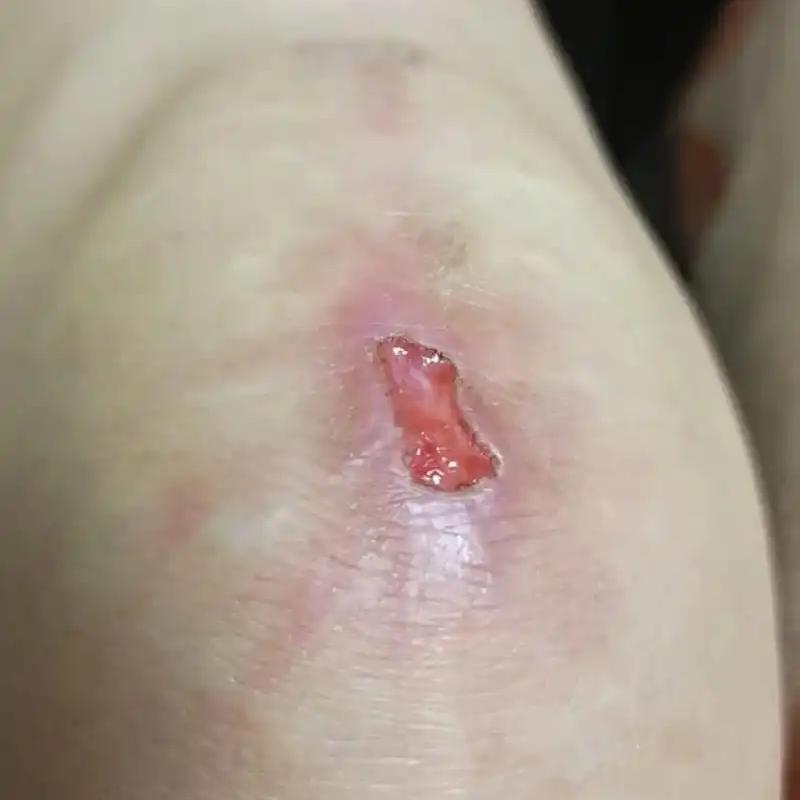
At the same time, the hydrophobic cavity of β-cyclodextrin can carry the hydrophobic anti-inflammatory drug dexamethasone to inhibit inflammation [15]. Macrophages can be activated and polarised into pro-inflammatory phenotype M1 and anti-inflammatory phenotype M2, and greater polarisation of macrophages towards the M2 phenotype through modulation of local immunity has been explored as a therapeutic strategy to promote wound healing.Saleh B et al [16] synthesised nanogels to encapsulate miR-223 을through electrostatic 상호작용을between hyaluronic acid-polyethyleneimine and hyaluronic acid-polyethylene glycol. Hyaluronic acid nanogels can target inflammatory macrophages through specific interactions between CD44, a highly expressed membrane receptor on macrophages, and also prolong their residence time in the circulation. Tiny RN한miR-223 encapsulated in hyaluronic acid nanogels can reprogramme macrophages to fight inflammation and promote wound healing. Oligohyaluronic acid can stimulate the secretion of vascular endothelial growth factor (VEGF) to trigger the formation of new blood vessels, and 왕et al. [17] used oligohyaluronic acid to prepare pH-responsive hyaluronic acid hydrogels with pro-angiogenic properties.
3 히알루론산 하이드로젤과 뼈 회복
The mainstay of clinical bone defect treatment is the implantation of autologous bone or bone substitutes, which are associated with many risks such as infection and immune rejection [18]. Ideally, bone substitutes should be made 생체의materials that mimic the structure, characteristics, and function of natural bone, and 3Dbioprinting is an ideal method for preparing biomimetic hydrogels. Cell-로드hydrogel scaffolds prepared with methacrylated gelatin and hyaluronic acid as printing inks were able to maintain the integrity of the scaffold network and significantly promote the formation of bone matrix after 28 d of incubation in mineralisation-inducing medium. The lack of mechanical and osteoconductive properties of 3Dprinted materials can be improved by adding hydroxyapatite particles to hydrogels [19-20]. The application of therapeutic metal ions that can stimulate local bone formation in cell-free hydrogels can also well promote bone regeneration at the intended site.
Zhang et al [21] prepared a nano합성hydrogel 기초on hyaluronic acid and self-assembledbisphosphonate-magnesiumnanoparticles, which not only enhanced the network structure of the hydrogel by 사용nanoparticles with acrylate groups on the surface as an effective multivalentcross-linking agent, but also promoted the mineralisation of the hydrogel and mediated the sustained 릴리스of Mg2+ . 한Wnt5a mimetic hexapeptide (Foxy5 peptide) bound to hyaluronic acid hydrogels mimics the bone-enhancing microenvironment in trabeculae by activating non-classical Wnt signalling, enabling MSCs to ‘sense’ mechanical forces and promote osteogenesis [22]. Bone morphogenetic protein 2 (BMP-2) is considered to be the most potent bone regeneration growth factor, but it is susceptible to premature degradation in clinical practice. Hyaluronic acid has a carboxyl group, and by adjusting the protonation state of hyaluronic acid carboxylic acid residues in covalently crosslinked hydrogels, the molecular interactions with BMP-2 can be utilised to achieve the intelligent release of BMP-2 at physiological pHvalues [23].
4 히알루론산 하이드로겔과 연골 보수
Once bone disease involves joints, cartilage damage inevitably occurs. The regeneration and repair of articular cartilage, which has a poor self-repairing ability, is extremely challenging, and a good clinical solution is the application of exogenous 배꼽코드blood-derived중간 엽stem 세포(MSCs) [24]. Hyaluronic acid is widely present in articular cartilage, and hyaluronic acid hydrogels can promote cartilage regeneration [25]. Hyaluronic acid hydrogels for cartilage repair are subjected to mechanical loads caused by patient'의 운동 오랜 기간, 따라서, 그들의 기계적 특성은 매우 까다롭다.렌 등 [26]이 제조한 미셀라 가교 히알루론산 하이드로겔은 강성과 인성이 우수하며, 연골 수복용 소재로 유망하다.Kim 등 [27]이 비스-포스폰산으로 개질된 히알루론산에 나노클레이를 첨가하여 얻은 하이드로겔도 기계적 특성이 우수하다.Kim 등 [27]이 얻은 하이드로겔은 기계적 특성이 우수하다.김 교수 등 (27)은 비스포스포네이트가 변형된 히알루론산에 나노 클레이를 첨가해 하이드로겔을 얻었다.
Rheumatoid arthritis, tumours and other joint diseases may cause damage to osteochondralbone. The complex repair process of osteochondralcartilage requires the addition of other active ingredients to hyaluronic acid hydrogels, and Yang et al [28] used hyaluronic acid hydrogels combined with Icariin to promote not only cartilage and osteogenesis, but also the repair of the calcified layer in vitro. As cartilage and subchondral bone have significant differences in chemical composition and biological profile, 류et al. [29] prepared a biomimetic 이상성osteochondral scaffold that can promote the repair of cartilage and subchondral bone, respectively. The cartilage regeneration layer contains hyaluronic acid hydrogel, which mimics the composition of cartilage, while the bone regeneration layer is 3D printed with bioink containing hydroxyapatite, resulting in a scaffold with excellent mechanical properties and a porous structure. The cartilage and bone regeneration layers were supplemented with different inducersto regulate the differentiation of MSCs into chondrocytes and osteoblasts, respectively. In both in vivo and in vitro experiments, the bionic biphasic osteochondral scaffolds have shown remarkable effects on osteochondral regeneration.
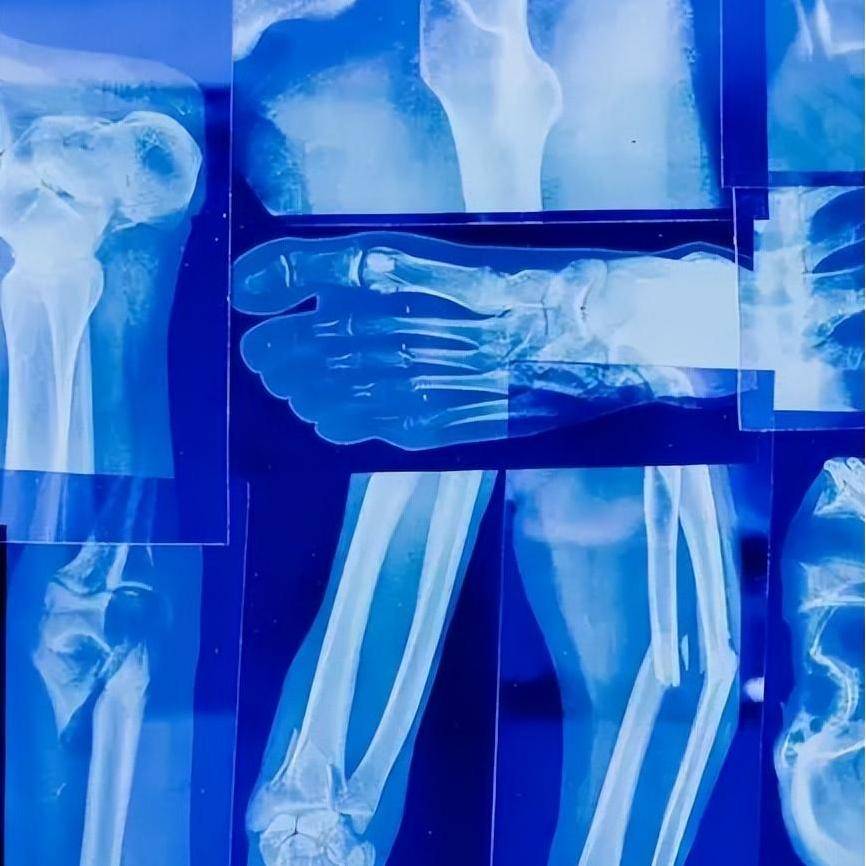
5 히알루론산 하이드로겔과 중추신경계 회복
The central nervous system (CNS), including the spinal cord and the brain, is difficult to regenerate after injury due to microenvironmental inhibition and glial scarring [30]. Hyaluronic acid hydrogel can mimic the extracellular matrix of natural nerve tissue and bridge the injury site, which is beneficial to CNSinjury repair. At the same time, loading the adhesion peptide PPFLMLLKGSTR in hyaluronic acid hydrogel can significantly promote the adhesion growth of MSCs, and play the role of MSCs in compensating for the damaged neurons and neurotrophins, thus achieving more effective spinal cord tissue repair [31]. Neural progenitor cells in the subventricular region proliferate in large numbers after a stroke, but they do not migrate to the stroke site, which means that recruiting endogenous neural progenitor cells to the lesion site is a more effective way than injecting exogenous stem cells directly via hydrogel.
The hyaluronic acid injectable particle hydrogel prepared by Nih et al [32] can deliver nerve growth factor through hyaluronic acid, and at the same time, the particles are annealed to each other in situ to form a microporous monolithic scaffold, which can mediate the rapid migration of endogenous neural progenitor cells, and the synergistic effect of nerve growth factor and neural progenitor cells in the focal site will lead to the repair of the brain injury. Angiogenesis in brain repair can change the inhibitory microenvironment after traumatic brain injury. Lu et al[33] used a hydrogel obtained by modifying hyaluronic acid with a VEGFmimetic peptide to repair brain injury by promoting angiogenesis and inhibiting the formation of glial scar tissue.
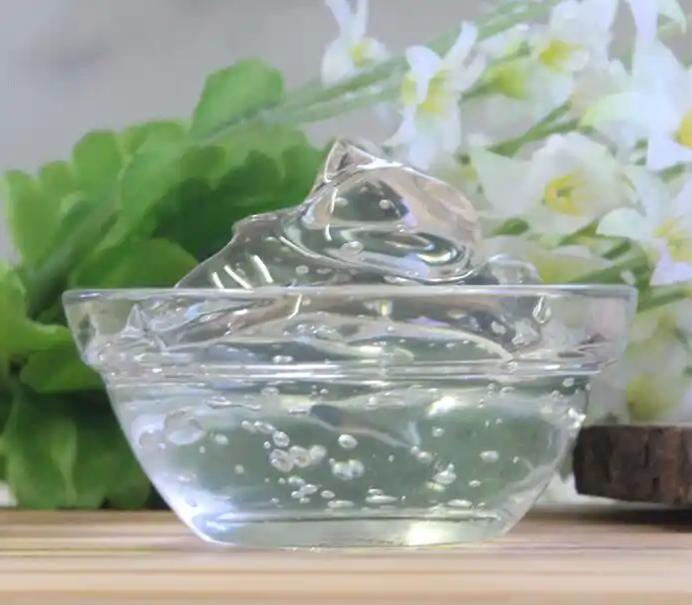
요약 및 전망 6
Hyaluronic acid hydrogels are widely used in tissue engineering, and the modification of their biomimetic structure and the loading of bioactive components can make the structure and function of the hydrogel materials meet the requirements of various types of tissue trauma treatment. Hyaluronic acid hydrogels can not only work well with stem cells for repair, but can also be used for targeted therapies due to its receptor-specific binding properties. However, hyaluronic acid functions differently depending on its molecular weight, and therefore, the impact of functional changes as the implanted hydrogel degrades to lower molecular weights needs to be considered.
The application of hyaluronic acid hydrogel in various types of tissue repair has been a hot research topic, and the design of hydrogel can meet different needs and improve the therapeutic efficiency. (1) The physical properties of hyaluronic acid hydrogels, such as softness and hardness, can regulate the behaviour of the cells encapsulated in them, and the cells will improve the regulation of the hydrogel by secreting proteins and other means to adapt to the needs [34-35]. Therefore, researchers can explore the interaction between hyaluronic acid hydrogels and cells to better regulate cellular behaviour and promote tissue repair. (2) The wound healing process is very complex, and a multifunctional smart hydrogel system that can rapidly heal wounds through more than one biological mechanism is more in line with clinical needs and an important direction for wound dressing research. (3) Nanoparticles have irreplaceable advantages in the field of drug loading, combined with the existing research on hyaluronic acid hydrogel, hyaluronic acid microgel has a broader application prospect. (4) The research on smart hydrogels is progressing rapidly, which can sensitively identify environmental conditions such as light, temperature, pH, etc. Especially the hydrogels that can respond to the specific recognition of protein molecules, and in synergy with hyaluronic acid, they can better meet the personalised needs of different patients for tissue repair. In conclusion, bionic, multifunctional, nano, and smart will be the new trend for the future development of hyaluronic acid hydrogel.
참조
[1] Passi 한,Vigetti D. tunable drug delivery system 으로서의 히알루로난 [J. Advanced Drug Delivery Reviews, 2019년,146:83-96.
[2] Salwowska N M, Bebenek K 한, Ż ą d ł o D 한, Wcis ł o-Dziadecka D L. 히알루론산의 물리화학적 특성 및 응용:체계적 고찰 (J. 대한화장품피부과학회지 2016, 15(4):520-526.
[3] Kim H, Jeong H, Han S,Beack S,Hwang B W,Shin M, Oh SS, Hahn S K. Hyaluronate과 its 파생상품 for 사용자 정의 생물 의학 응용 프로그램 [J]다. 생체, 2017년, 123:155-171.
[4] Hemshekhar M, Thushara R M, Chandranayaka S, Sherman LS, Kemparaju K, Girish K S. 신흥 역할 of hyaluronic acid bioscaffolds in tissue engineering and 재생의학 [J. International Journal of Biological acromolecule, 2016년, 86:917-928.
[5] Litwiniuk M, Krejner A, Speyrer M S, Gauto A R, Grzela T. Hyaluronic acid 염증과 조직 재생에서 [J. 상처:A Compendium of Clinical Research and Practice, 2016, 28(3):78-88.
[6] 굽타 R C, 랄 R, 바이, 포화지방산이 한다. 히알루론산:분자 기전과 치료 궤적 [J]. Frontiers in Veterinary Science, 2019, 6:192 쪽.
[7] 비가니 B, 로시 S, 산드리 G,본페로니 MC, 카라멜라 CM, 페라리 F. 히알루론산과 키토산 기반 나노시스템:상처 치료를 위한 새로운 드레싱 세대. 약물전달에 대한 전문가 의견, 2019, 16(7):715-740.
[8] 응우옌 N 트, 응우옌 L V, 트란 N M, 응우옌 D T, 응우옌 T, 트란 H A, 당 N N, 보 T V, 응우옌 T. chitosan과 hyaluronic acid를 기반으로 하는 in situ cross-linking hydrogels의 특성과 응용에 미치는 성분의 산화도와 부피비의 영향 (The effect of oxidation degree and volume ratio on properties and applications of chitosan and hyaluronic acid based on situ cross-linking hydrogels)재료 과학 &공학 C, 생물응용소재, 2019, 103:Art no 109670.
[9]라 사 M F P, 미구엘 S P, 카브 랄 C S D, Correia 나는 J. Hyaluronic acid-based 상처 드레싱:검토 [J]. 탄수화물 중합체, 2020년,241:Art no 116364.
[10] 버드 A L, Belkaid Y, Segre J A. The 인간 skin 미생물 군집 [J]다. 자연 미생물학 리뷰, 2018, 16(3):143-155.
[11] Liang Y,자 오X, Hu T, Chen B, Yin Z,Ma P X, 궈B. 지속적인 약물 방출 및 광열 항균 활성을 가진 주사 가능한 복합 하이드로젤을 실시하는 접착성 지혈제 to promote full-thickness skin regeneration during wound healing [J]다. Small (Weinheim an der Bergstrasse, 독일), 2019, 15(12):Art no e1900046.
[12] 왕S Y,Kim H, Kwak G, Yoon H Y,Jo S D,Lee JE, Cho D, Kwon I C, Kim S H. development of biocompatible 하하 hydrogels 내장 된 with a new synthetic 발전된 상처 관리 관리를 위한 세포 이동을 촉진하는 펩타이드.Advanced Science (Weinheim, Baden-Wurttemberg, Germany), 2018, 5(11):Art no 1800852.
[13] 왕 X L, Xu, P C, 야오 Z X, 팡 Q, 펭 L B, Guo R, 쳉 B. 준비 해수 침수 상처 치유 촉진을 위한 항균 히알루론산/4차 키토산 하이드로젤의. 「 Frontiers in Bioengineering and Biotechnology 」, 2019, 7:360.
[14] 막반디 P, 알리 G W, 델라 살라 F, 압델-파타 W I, 보르자키엘로 A. 생합성 및 특성분석 of antibacterial thermosensitive hydrogels based on 옥수수 실크 잠재적인 상처 치유를 위한 추출물, 히알루론산 및 나노 실버 [J. 탄수화물 중합체, 2019, 223:Art no 115023.
[15] 유 B H, 잔 A Y,류 Q,예은, 황 X Q, 슈이 (Shu Y), 양이 (Yang Y), Liu H Z다. 소수성 약물의 직접적이고 편리하며 효율적인 투여를 위해 고안된 초분자 교차 연결 하이드로겔 [J. 제약학 국제저널, 2020, 578:Art no 119075.
[16] Saleh B, Dhaliwal H K, Portillo-Lara R, Sani E S, Abdi R, Amiji M M, Annabi N. 로컬 immunomodulation using an adhesive hydrogel loaded with mirna-laden 나노입자는 상처 치유를 촉진한다 [J. 소형, 2019, 15(36):Art no e1902232.
[17] Wang T, Zheng Y, Shi YJ,Zhao L. 프로타민 나노입자와 히알루로난 올리고당이든 ph-반응 칼슘 알긴산 하이드로겔은 혈관 생성과 항균 활성을 향상시킴으로써 당뇨병성 상처 치유를 촉진한다 [J]. Drug Delivery and Translational Research, 2019, 9(1):227-239.
[18] 자이 P S, 펭 XX,리 B Q,류 Y P, 선 H C,리 XW. 뼈 재생에 히알루론산을 응용한 [J. International Journal of Biological macromolecule, 2020년, 151:1224-1239.
[19] Yang Y Q, Wang M Q, Yang S B, Lin Y X, Zhou Q H, 리H J, Tang T T. 생체 모방 광물화를 위한 골세포 네트워크의 바이오프린팅. Biofabrication, 2020, 12(4):예술제045013.
[20] 웬즈 A, 보르처스 K, 토바르 G E M, 클루거 P J. 하이드록시아파타이트에서의 골 매트릭스 생산-골 바이오프린팅에 적합한 변형된 하이드로겔 [J]다. Biofabrication, 2017, 9(4):Art no 044103.
[21] 장 K Y,린 S, 펭 Q, 동 C Q, 양이형 (Yang Y H), Li G, 비안 L M. Nanocomposite 겔 안정 by self-assembled multivalent bisphosphonate-magnesium 나노입자는 마그네슘 이온의 지속적인 방출을 매개하고 현장 내 골 재생을 촉진한다.Acta Biomaterialia, 2017, 64:389-400.
[22]리 R,린 S E, 주 M L, 등 Y R, 첸 X이, 위 K C, 수 JB,리 G, 볜 L M.
합성 프레 젠 테이 션 of noncanonical wnt5a 모티브 촉진 기계센싱 의존적인 줄기세포의 분화와 재생 [J]다. 사이언스 어드밴시스, 2019, 5(10):Art no eaaw3896.
[23] 얀 H J, 카살리니 T, 헐사르트-빌스트롬 G, 왕 S J, 움멘 O P, 살발라글리오 M, 라르손 S, 힐보른 J, 바르게스 O P. 체내 골 형성 촉진을 위한 세포외 기질 미메틱 하이드로겔의 성장인자 서열화 합성 설계 [J]다. Biomaterials, 2018, 161:190-202.
[24] 박 Y B,하 C W,이 C H, 박 Y G. 무릎의 큰 골연골결손의 복원 using a composite of umbilical cord blood-derived mesenchymal stem cells 및 히알루론산 하이드로겔:5년 추적관찰을 한 증례보고 [J. BMC 근골격계 질환, 2017, 18(1):59.
[25] Zhu D, Wang H, Trinh P, Heilshorn S C, Yang F. Elastin-like protein-hyaluronic acid (elp-ha) hydrogels-연골 재생을위한 기계적 및 생화학적 단서가 분리됨 a132-140.
[26] 렌 P G, 장 H, 다이즈, 렌 F, 우이 D, 호우 R X, 주이 B, 푸 J. 스티프 미셀 (Stiff micelle)-십자형 hyaluronate hydrogels with low 부기 for 잠재적인 cartilage repair [J]다. Journal of Materials Chemistry B, 2019, 7(36):5490-5501.
[27] Kim Y H, Yang X, Shi L, Lanham S A, Hilborn J, Oreffo R O C, Ossipov D, Dawson J I.Bisphosphonate nanoclay edge-site interactions 용이하게 hydrogel 조립식 그리고 지속적 성장 요인 국산화 [J. Nature Communications, 2020, 11(1):1365.
[28] 양 J R, 류 Y B, 허 L, 왕 Q G, 왕 L, 위안 T, 샤오 Y M, 팬 Y J, 장 X D.Icariin의 osteochondral interface 복원을 위한 히알루론산/콜라겐 하이드로겔 conjugated hyaluronic acid/collagen hydrogel.Acta Biomaterialia, 2018, 74:156-167.
[29] 류 X M, 웨이 Y Q, 소안 C K, 류 L, 라이 C, 차이 M Y, 장 Z G, 왕 L,시 X T. 한 생체 모방 biphasic osteochondral scaffold with layer-specific release of stem 셀 차별화 inducers for the 재건 of osteochondral 결점 [J]다. Advanced Healthcare Materials, 2020, 9(23):e2000076.
[30] 톰슨 R E, 파디크 J, 스미스 L, 케니 P, 크로포드 L, 쇼이체트 M, 사키야마 엘버트 S. 성상세포 유래 세포외기질 및/또는 v2a 간뉴런을 함유한 히알루론산 하이드로겔이 척수 손상에 따른 조직학적 결과에 미치는 영향 [J]. Biomaterials, 2018, 162:208-223.
[31]리 L M, 한 M, 장 X C,인 X Z, 첸 F, 장 TY, 렌 H, 장 J W, 호우 T J, 첸 Z, Ou-Yang H W, Tabata Y, 셴 Y Q, 가 오 J Q. Peptide-tethered hydrogel scaffold는 중간엽 줄기세포와의 시너지 작용을 통해 척수 절단에서 회복을 촉진한다. ACS 적용 재료 &인터페이스 (Interfaces), 2017, 9(4):3330-3342.
[32] Nih L R, Sideris E, Carmichael S T, Segura T. 뇌졸중 강내에 map (microporous annealing particle) 하이드로겔을 주사하면 교증과 염증이 감소되고 병변으로의 npc 이동이 촉진된다 [J].Advanced Materials (Deerfield Beach, Fla), 2017, 29(32):10.
[33] Lu J J, Guan F Y, 쿠이 F Z, 태양 X D, Zhao L Y, Wang Y, Wang X M. 쥐의 외상성 뇌손상 모델에서 vegf 모사 펩타이드로 고정화된 히알루론산 하이드로젤에 의한 혈관신생 강화. 재생바이오소재, 2019, 6(6):325-334.
[34] Madhusoodanan J. 행렬 mimics 모양 cell 연구 [J]다. 자연, 2019, 566 (7745):563-565.
[35] 프뢰벨 C, 마우크 R L, 버딕 J A. Local nascent protein deposition and remodelling guide mesenchymal 기질세포 mechanosensing and fate in three-dimensional hydrogels [J].Nature Materials, 2019, 18(8):883-891.


 영어
영어 프랑스
프랑스 스페인
스페인 러시아
러시아 한국
한국 일본
일본